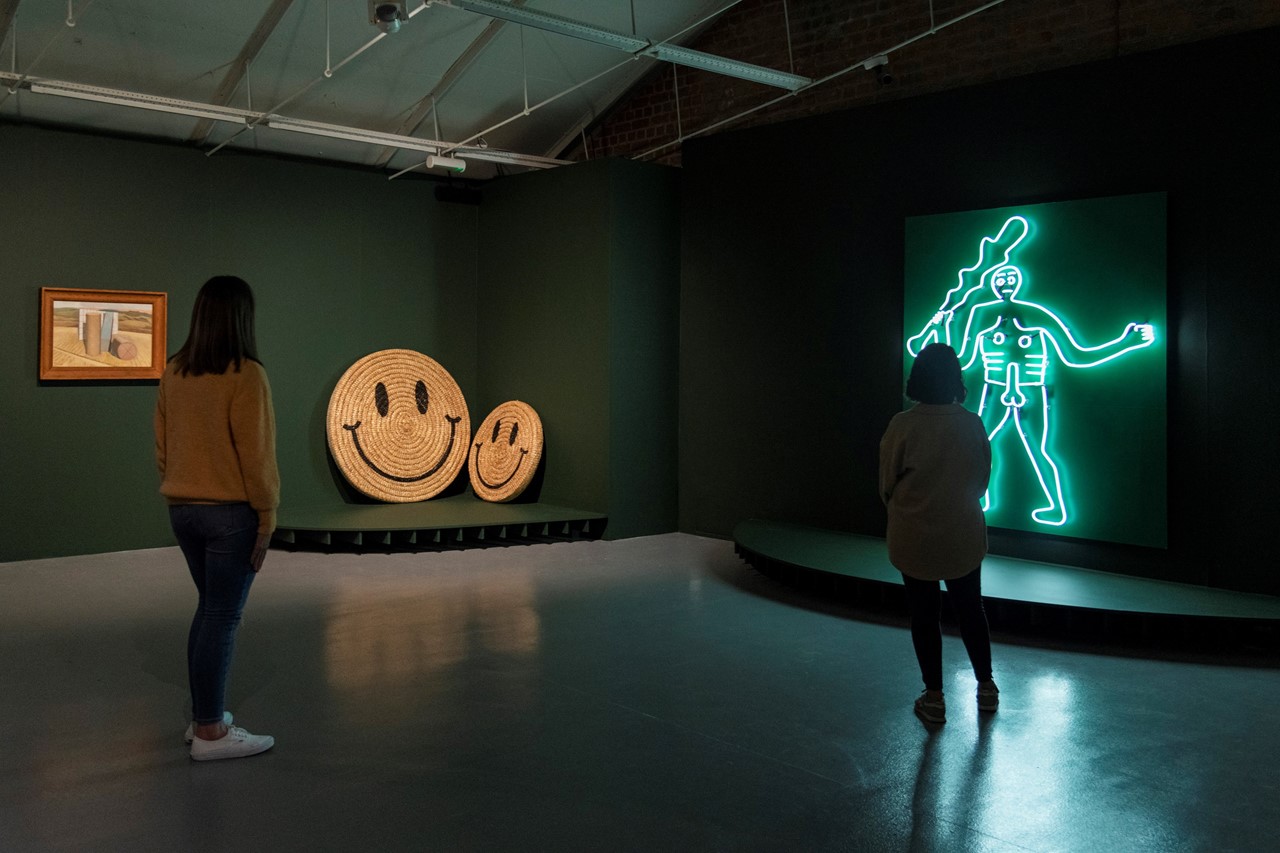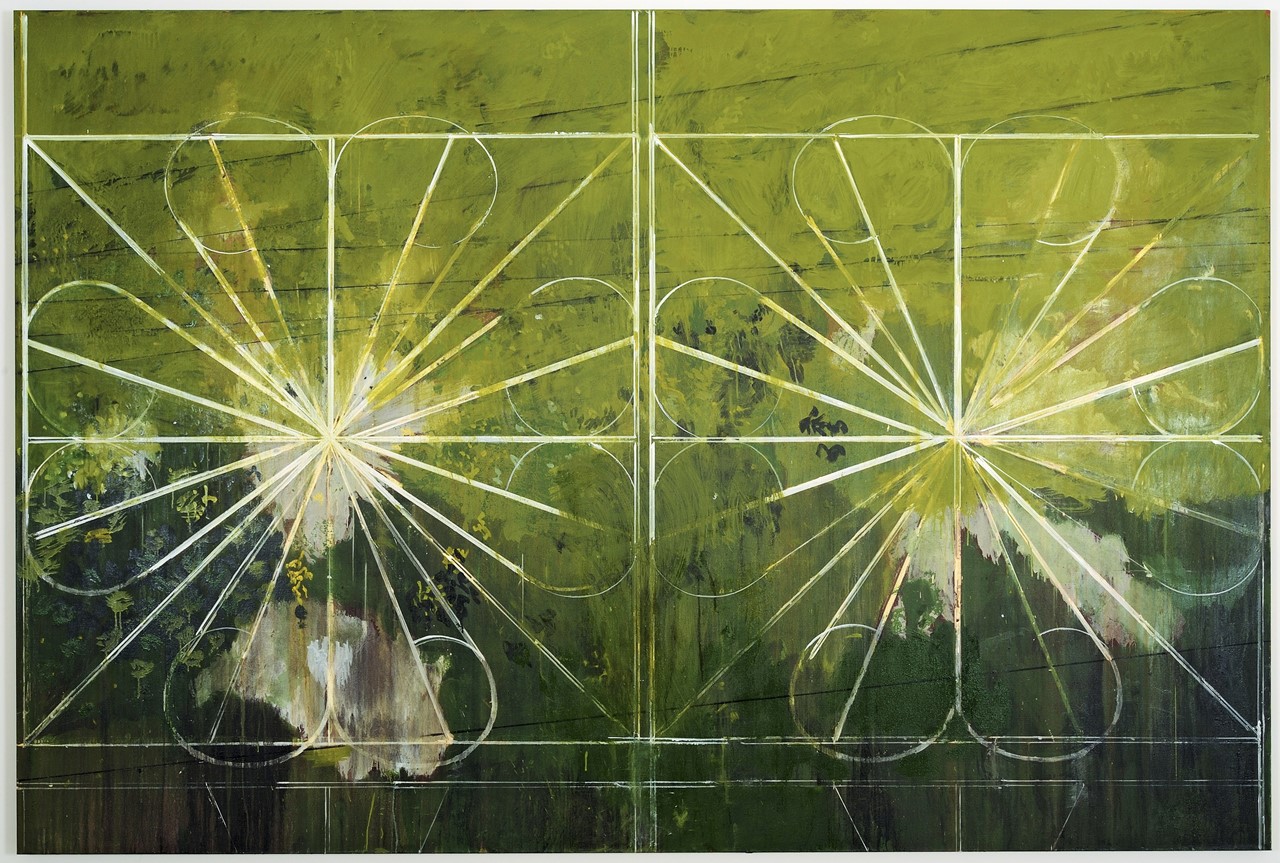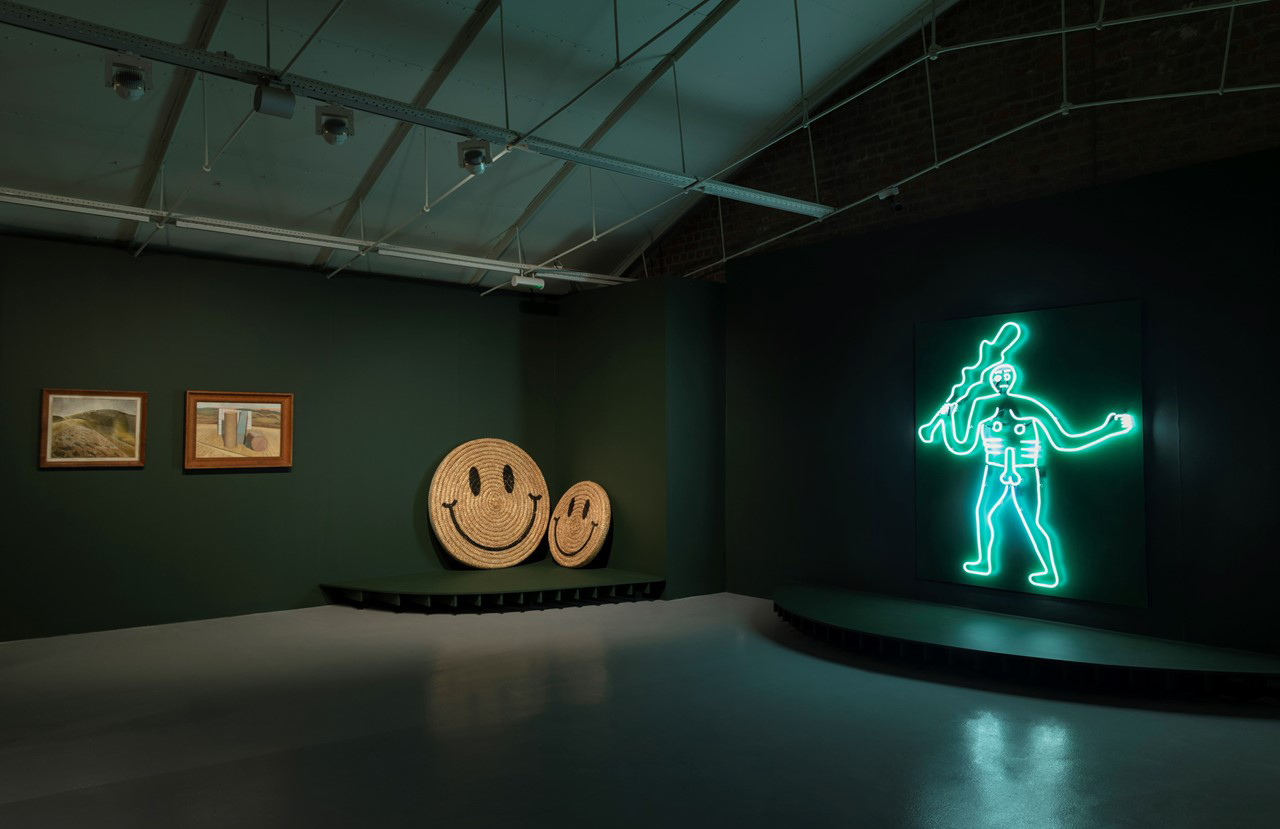From the pastoral verses of Jerusalem to the novels of Thomas Hardy, the British countryside has delighted and inspired creatives for hundreds of years. But this conservative ‘Constable’ version of the UK’s rural landscape – so integral to our national identity – is an archaic idea trapped in amber. Tate Liverpool’s Radical Landscape exhibition explores the contradictions of the British countryside and how it’s always been political ground zero.
The rangy, 150-piece exhibition of paintings, photography, and sculpture post questions about ownership, the right to roam, the climate crisis, activism – and even rural rave culture.

Claude Cahun, “Je Tends les Bras” (1931). Image © Courtesy of Jersey Heritage Collections.

Tanoa Sasraku, detail from “Swaling Gorse” (2018). Image © the artist, Tate.

Tacita Dean, “Majesty” (2006). Image © the artist, courtesy Frith Street Gallery, London.

Tanoa Sasraku, detail from “Swaling Gorse” (2018). Image © the artist, Tate.

Graham Sutherland, “Form over River” (1971-2). Image © The Estate of Graham Sutherland.

Installation view. Photography Matt Greenwood, Tate.

Installation view. Photography Matt Greenwood, Tate.

Chris Killip, “Cottage and coastal erosion, Cranstal, Bride” (1970-3). Image © Chris Killip.
The pastoral is present via John Constable’s ‘Flatford Mill’ (1816) and Eric Ravilious’s ‘Westbury Horse’ (1936), depicting the geoglyph equine carving in Wiltshire whose original monarchistic and nationalist messages are layered through paint. But Jeremy Deller subverts this pastoral vision through his neon green artwork, ‘Cerne Abbas Giant’, which glows with the sexuality and mysticism of our ancient ancestors.
Similarly, Tacita Dean’s ‘Majestic’ (2006) depicts the gnarled, ancient Fredville Oak – the oldest oak tree in Great Britain – engaging with the idea of legacy and change. Derek Jarman, Ingrid Pollard, Tanoa Sasraku and fresh commissions by Davinia-Ann Robinson and Delaine Le Bas further unpick the British landscape’s dualities.

The most coherent section deals with activism, with notions of ownership, community and conflict, freedom, rebellion, and war seen via banners, photography, and moving images from the 1980s Greenham Common protests against NATO warheads. Likewise, Le Bas’s installation ’ Rinkeni Pani (Beautiful Water)’ engages with her English-Romany heritage, spotlighting trespass and climate change.
Ruth Ewan’s installation ‘Back to the Fields’ plants live trees in the centre of the exhibition and while Gustav Metzger’s psychedelic installation, ‘Liquid Crystal Environment’, harnesses energies from heat and light.
Radical Landscapes is at Tate Liverpool until 4 September, Royal Albert Dock Liverpool Liverpool L3 4BB

Photography Marcus J Leith, courtesy of Camden Art Centre.


























